Reproduction of rubber ficus at home
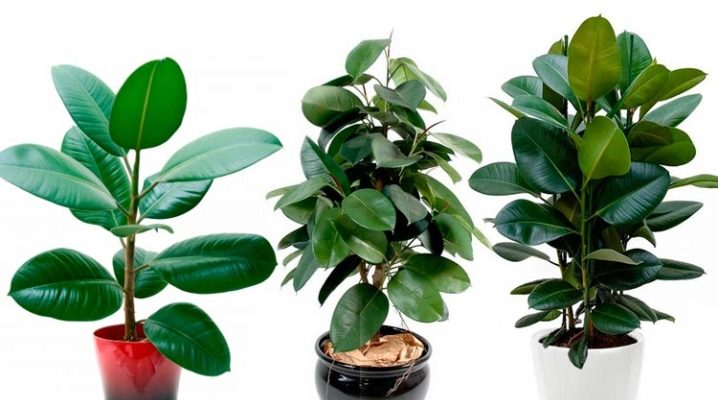
An excellent home decoration is "Elastic" or rubber-bearing ficus. This is a decorative leafy plant that enjoys increased attention due to its beautiful appearance and easy care. Glossy leaves will be a luxurious addition to any interior. It is worth considering in more detail the nuances of reproduction of "Elastica" at home, as well as the subsequent care of the plant.
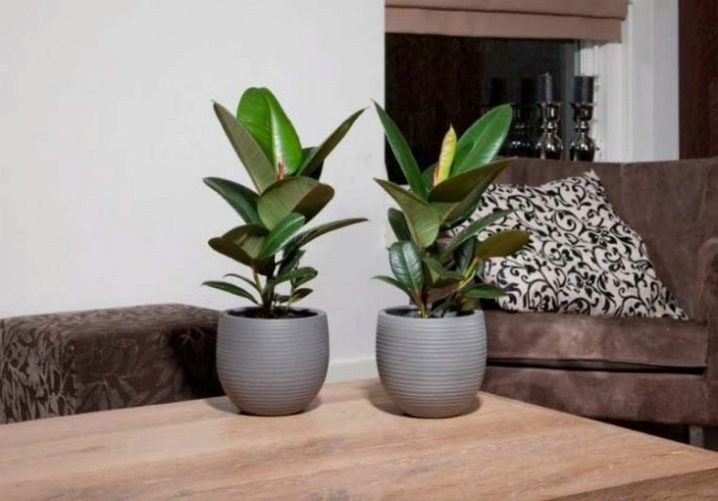
Peculiarities
"Elastica" is very often used as a houseplant. According to legends, it is responsible for family well-being in the house where it grows. This plant is very popular in its homeland - in India and southern Indonesia. If "Elastica" grows in natural conditions, then its height can reach 30 meters. An evergreen tree will be a worthy decoration for your home.
Rubbery ficus very often grows in breadth due to the presence of aerial roots. They form on the branches and trunk of the tree, eventually grow into the soil, giving the plant a shape called a banyan tree. With the help of such ingrowth, the plant receives additional nutrition. Locals gave this plant the name "snake tree" because of the aerial roots that wriggle like snakes.

Elastica leaves have a dark green hue. They are rather large, elliptical in shape with sharp points towards the top. There are also stipules of red-brown color, they are usually presented on young leaves, since as soon as they begin to unfold, the stipules fall off. Flowers are usually not considered by growers, as they are quite rare.... Usually they appear on the plant only during pollination, and then this process must be performed by certain insects.
Usually the plant does not bloom at home. Ficus blooms can only be seen in the mature stage of development, if it grows in the garden.
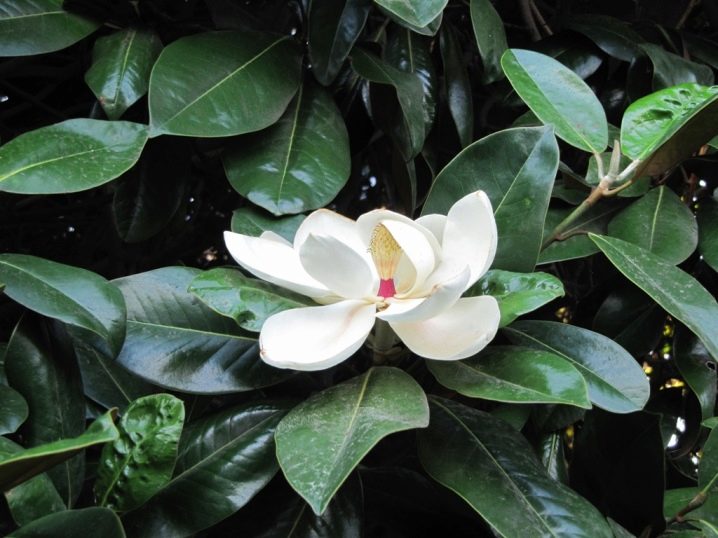
Ficus rubber fruits are represented by syconia (spherical berries), which are only 1 cm in diameter. In appearance, they have much in common with figs. Previously, the plant was grown to obtain milky juice, because it was it that was used in the production of rubber. It is worth noting that the juice of this plant can provoke skin irritation, the manifestation of allergic reactions and even lead to dermatitis. Milky juice contains not only latex, but also alkaloids and enzymes. This juice is very useful for ficus, because it heals various wounds with it.
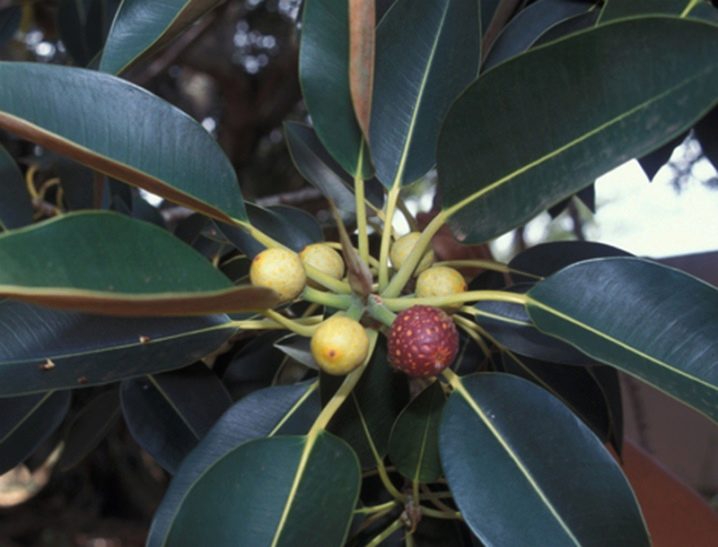
Usually, at home, the height of a rubber-bearing ficus does not exceed 2 meters. If you create optimal growing conditions for the plant, then in 1 year it will grow in height by 40–45 cm. If the plant already reaches the ceiling, then you can stop its growth by trimming the top. Usually, when grown at home, the tree has a small number of side shoots.
A striking representative of the rubbery ficus is "Robusta". This plant is characterized by power and strength, as a result of which it received this name. Breeding this variety is not difficult, since the plant can be propagated in several ways, and each gardener can choose the optimal solution.
Even a beginner can handle the cultivation of rubbery ficus.
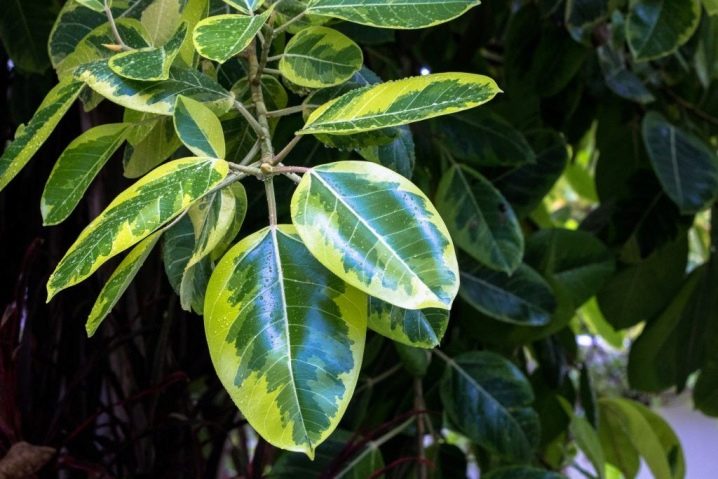
How to propagate?
When multiplying rubbery ficus, it is worth adhering to the following generally accepted recommendations:
- experts advise to propagate the plant exclusively in warm weather;
- ficus should be kept away from direct sunlight, since they suffer from ultraviolet radiation, especially young leaves are susceptible to its harmful effects;
- when cutting the cutting, it is worth removing the milky juice, while it is enough to rinse it under running water;
- for reproduction, only woody shoots must be used, because in the future they will be able to give roots, in contrast to young shoots;
- to root a stalk, it is necessary to use the upper part of the stem or parts of it that contain more than one node;
- reproduction can be done at any time of the year; many specialists do it in spring or autumn, in November.
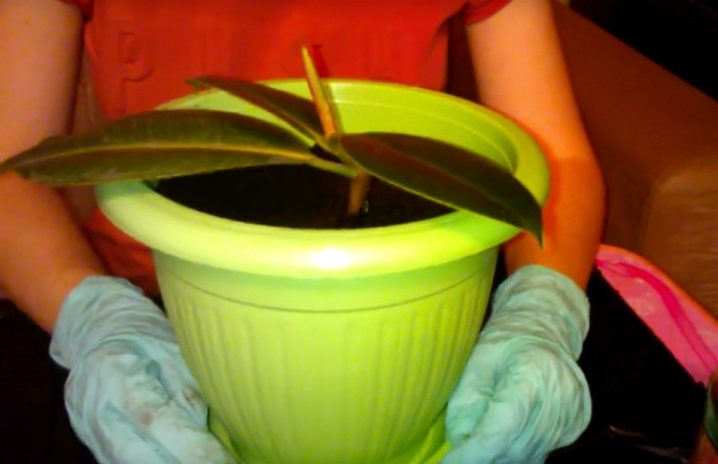
Cuttings
Over time, the ficus can grow, that is, its trunk has a small amount of foliage and becomes very long. Then the tops are trimmed to form the crown of the tree. In this case, new plants can be grown from cuttings cut from the top.
For cuttings of rubber ficus, shoots from the middle part of the trunk can also be used.
To choose the right rubber cuttings, you should pay attention to the following criteria:
- the length should be between 7 and 8 cm;
- the presence of 2 or 3 internodes is important, on which the developed leaves are located;
- the lower cut should be located under the kidney.
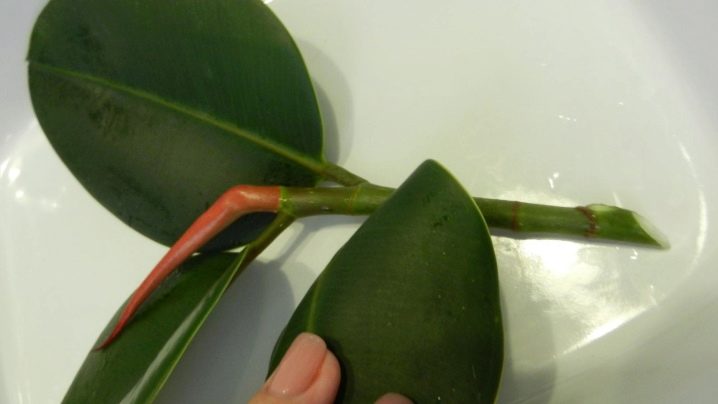
To prepare the cuttings for planting, it is worth adhering to the following algorithm of actions:
- after cutting, the cuttings should be rinsed under warm running water to remove milky juice from its surface;
- it is worth removing the sheet from the lower knot; for this, a rather sharp knife is used;
- the lower leaves of a large size must be twisted into tubes, while the lower side should be inside, such a structure should be fixed with an elastic band.
After preparation, the cuttings should be planted exclusively in loose soil, while observing a slight slope. The cutting should be deepened in such a way that only one internode is in the ground. After planting, it is necessary to thoroughly moisten the soil. If it is necessary to accelerate the formation of the plant's root system, you can independently equip a small greenhouse from a regular plastic bag. Heat has a positive effect on root formation, therefore, experts advise placing the container with the handle closer to the heating devices.
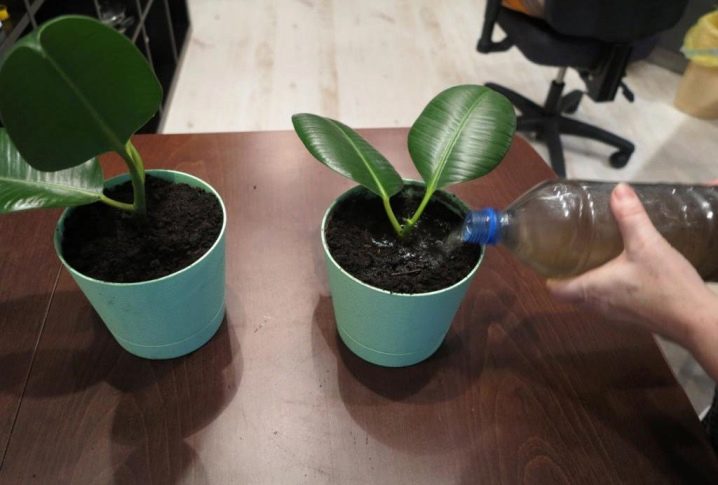
Water can also be used to root cuttings. It should be borne in mind that this option is only suitable for carrying out in the warm season, when the plant is in the phase of active growth. First you need to trim and harvest the cuttings, as described above. After that, they are placed in a container, already settled boiled water is poured into it.
To exclude the possibility of the formation of rot on the roots, it is worth placing a small piece of charcoal at the bottom of the container.
During the formation of roots, the process should be carefully monitored. The water must be constantly kept at the same level, so it needs to be refilled from time to time. With a slight drying out, the cutting may die. When the first roots appear, the plant must be immediately transplanted into soil, preferably loose. And then the container with the plant should be equipped with a mini-greenhouse.
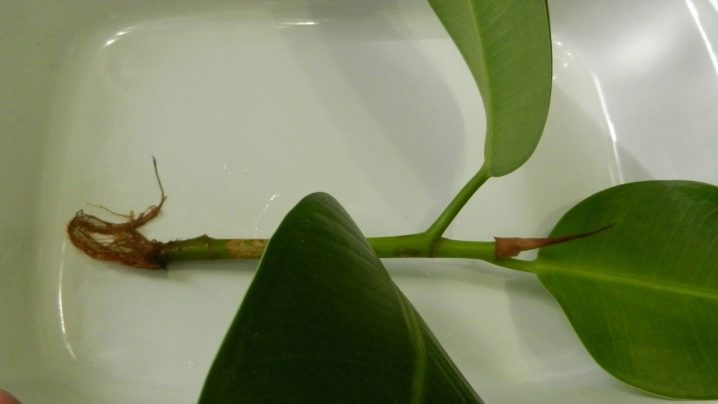
Today, peat tablets are often used to make the rooting of the planting material more efficient and faster. These tablets contain special stimulants for active growth, as well as the formation of the root system. With their use, you can hope for a 100% result. Cuttings should also be prepared as described above. But the tablet should be soaked in warm water before using it to plant the ficus.
When the tablets increase in volume, they should be carefully squeezed out, then a depression should be made in the center and the handle should be placed there. After that, the tablet with the plant is already placed in a plastic container, while it is worth using a container with a lid made of the same plastic. Such mini-greenhouses are already on sale in specialized stores, but if you wish, you can make them yourself. In the future, the plant needs regular ventilation and watering.
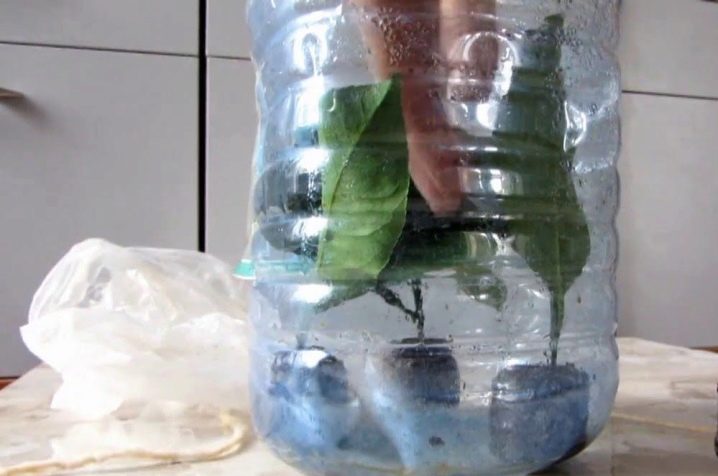
Sheet
Reproduction of rubber ficus using a leaf is quite productive, almost 100% guaranteed. It is worth noting that beginners are used to root leaves without a bud, in which case the leaf does not grow, although it forms roots. To plant a leaf, you can use a container of any shape, but always made of plastic. The bottom of the tank is filled with foam or expanded clay.
The container must have holes in the bottom. Use only loose soil. When the leaf deepens, its bud should be located above the soil surface. Next, the plant needs to be well watered, put on a polyethylene bag on top to create a greenhouse effect. Within a month, you should expect the formation of roots.

Air layering
Many plant breeders use air layers for propagation of rubbery ficus. It is worth choosing an overgrown shoot that differs in length, as this will contribute to ease of cutting. The first step is to make a vertical incision in the bark with a sharp knife. Next, you need to treat a toothpick or match with "Kornevin" and insert into the incision. Then you should overlay the place of the cut with moistened moss or sawdust. Next, it must be wrapped in polyethylene film.
After such actions, the appearance of roots can be expected in 1.5–2 months. The appearance of the root system means that you can cut the shoot and plant it in a separate container. This method also makes it possible to rejuvenate an old plant.
If you adhere to the rules of reproduction of rubber ficus, then you can grow a large plant yourself.

How to care after transplant?
Lighting
This plant loves diffused light, while avoiding direct sunlight. Experts recommend placing a container with ficus on the east or west windowsill. But if this is not possible, then the plant should be placed in the shade, while the bottom of the ficus will quickly shed the foliage, and the growth rate will be moderate.
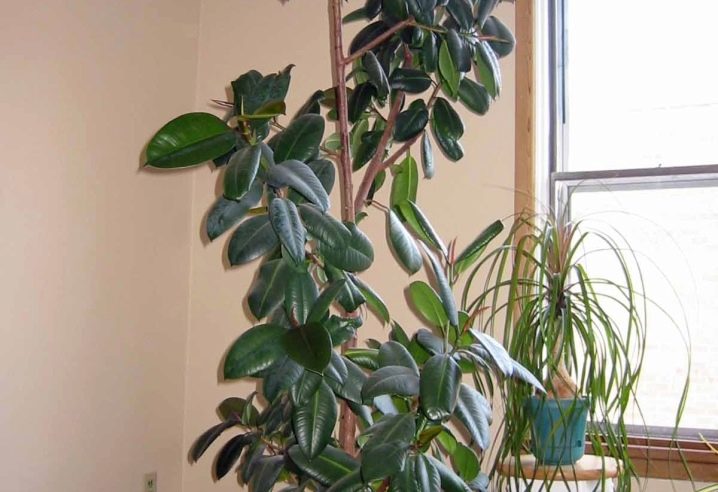
Temperature regime
To create the most comfortable temperature regime, it is worth adhering to a temperature of +20 +25 degrees.
In the cold season, the temperature should not drop below +15 degrees, otherwise the plant will die.
Humidity
To humidify the air, spraying is used in warm weather, but in winter it is worth wiping the ficus leaves with a damp sponge. For water procedures, it is recommended to use exclusively settled water at room temperature. It is important to avoid drafts.
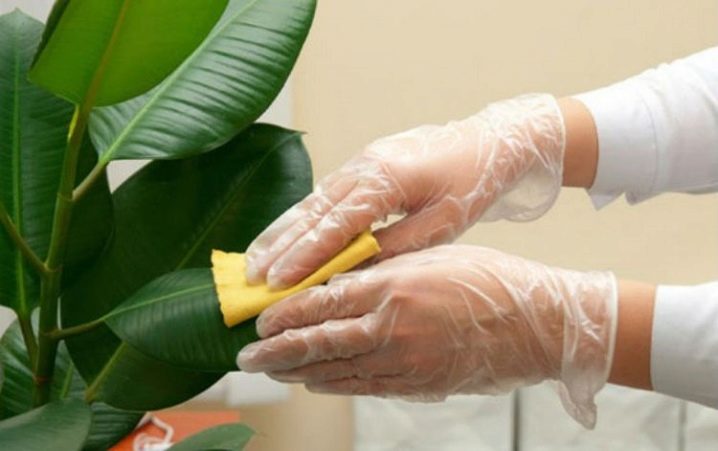
Top dressing
In order for the ficus to be healthy and beautiful, it is worth feeding the plant 2 times a month, when it is actively growing. It is necessary to use complex fertilizers in liquid form, while nitrogen must be included in their composition.
Watering
It is necessary to moisten the soil when it begins to dry out. So, in winter it should be done once a week, in summer - 3 times a week.
Watering the plant hard enough will likely shed all the foliage.

Florist tips
Rubbery ficus is an unpretentious plant, since it does not require special care. Nevertheless, he is also ill. It is worth considering the most common diseases and their causes.
- The leaves turned yellow. If it is wrong to care for the ficus, then the leaves begin to turn yellow. The reasons include the wrong size of the growing container, the high content of fertilizers, especially salts, the presence of rot on the roots.
- Leaves fall. Usually old leaves fall naturally. If the plant “loses” young foliage, then the reasons may be high soil moisture, rather rare watering, lack of lighting, sudden changes in temperature or the presence of drafts.
- The plant does not grow. The reason for this may be a cramped pot, a minimum of nutrients, a lack of light.
The rubbery ficus is a luxurious plant with large, shiny leaves. It looks great in various styles of the interior, and also perfectly cleans the air, therefore it is in high demand among flower growers.

For information on how to propagate ficus at home, see the next video.

























The comment was sent successfully.